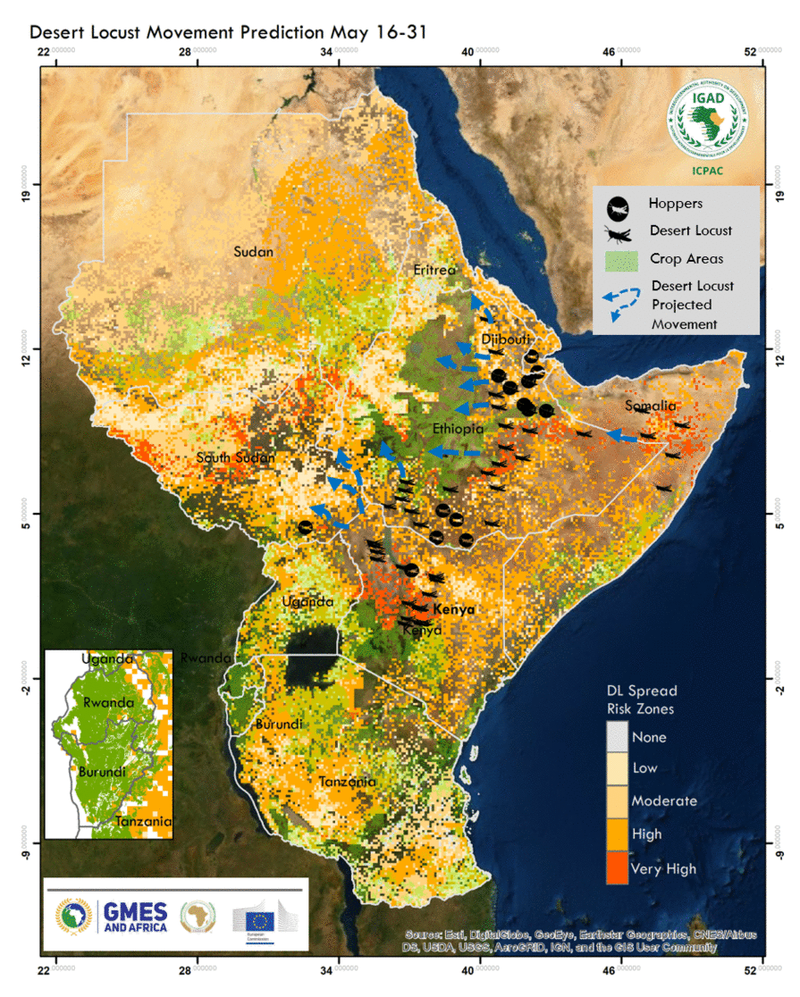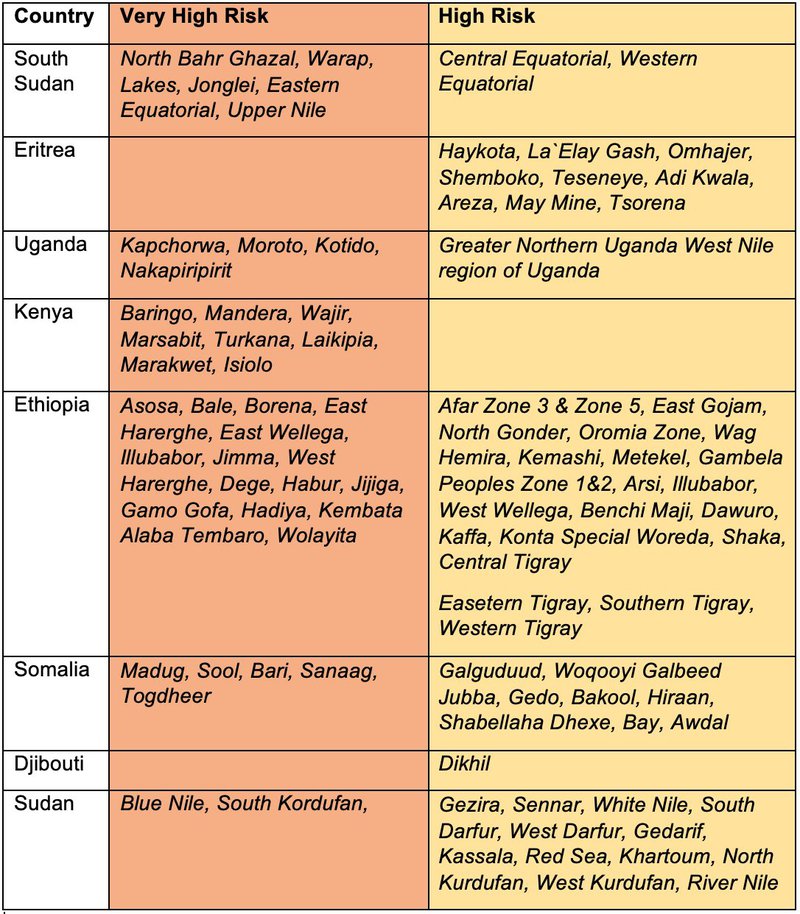Desert Locust Prediction 16-30 May
The situation remains serious in Eastern Africa
Areas with agro-pastoral farming have the highest risk of locust invading crops. Risk of invasion to crop areas is still high due to winds movement in Ethiopia, Eritrea and Sudan.

- Rainfall is in higher than normal amounts in most crop areas in the southern & equatorial part of the region & plants are in vegetative stages.
- Pastoral regions are currently still most impacted by the locust invasion although due to high rainfall amounts degraded biomass has recovered. Locust are still predominantly in non-crop areas.
- Locust swarms are declining due to the combined effect of intensified control and unfavourable climatic conditions in many parts of the region. Most invasion areas are declining and in the next weeks the locust are expected to move to normal recession areas.
- In the invasion areas of desert locust in the Eastern Africa region, the conditions for desert locust development and reproduction are becoming less suitable as compared to January-March 2020.
- Climatic conditions suitable for desert locust development are forecast to be highly suitable in northern South Sudan, western and central Ethiopia, Somalia & northwestern Kenya.
- Ecological conditions (particularly the availability of green vegetation) are suitable in most parts of the region due to high rainfall received necessary for vegetation regrowth.
- The country with most suitable conditions for invasion is South Sudan due to a combination of suitable climatic and ecological conditions.
- Wind direction and speeds, which greatly determine swarm movement is forecast to be southerly & southwesterly in Somalia. This makes Tanzania, Rwanda, Burundi, Uganda, southern Kenya and southern Somalia to be on lowest risk of an invasion
Desert locusts are projected to move from: South to northeastern areas of South Sudan and southern Sudan, south to western and northern to eastern Ethiopia, and northern Ethiopia to southern Eritrea.
Invasion status: desert locust hoppers have recently been reported in East & South Turkana, Marsabit, parts of southern Ethiopia Oromo regions, Torit South Sudan and Dire Dawa, northern Somalia and Afar regions of Ethiopia. Swarms are still widespread in parts of Oromia, SNNP and Afar regions in Ethiopia, Samburu, Marsabit, Turkana and Laikipia parts of Kenya.
Highest risk areas for desert locust invasion based on forecasted suitable climate and existing vegetation conditions are outlined in this table.

